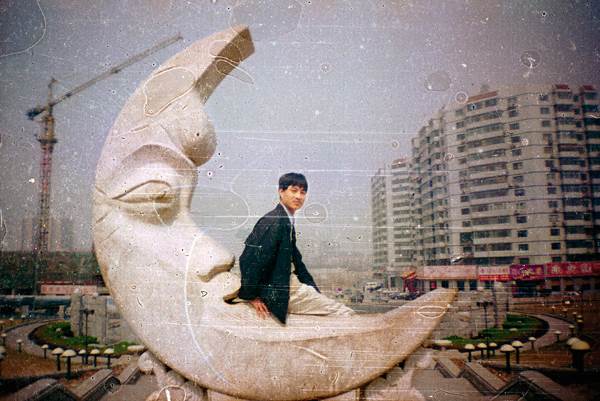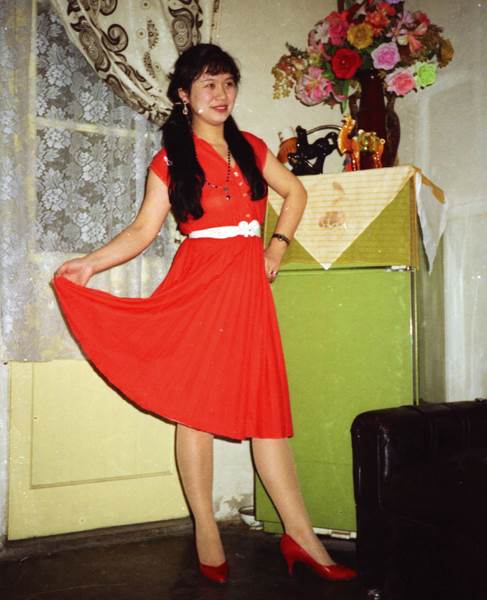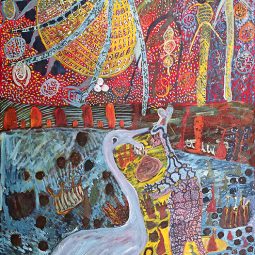In his extensive accumulation of photographs, Beijing-based French artist, Thomas Sauvin, allows us to witness the intimate and public realm of ordinary Chinese people during a period of immense social change following the Cultural Revolution.
Sydney’s 4A Centre for Contemporary Asian Art, presents ‘Beijing Silvermine’ a selection of photographs from this extraordinary archive, curated by Thomas Sauvin. These photographs explore universal themes of love, leisure, birth, youth and happiness and give audiences a rare and incredibly personal insight into a period when global consumerism rose in China and the people began to enjoy popular culture. “It’s really the birth of post-socialist China”, says Sauvin.

Since 2009, recognising a rare chance to rescue lost memories in photo negatives that would otherwise be lost to filtration for their silver nitrate content, Sauvin has shifted through the detritus of recycling centres on the outskirts of Beijing reclaiming those images he finds most interesting.
Looking for scenes of everyday life, Sauvin has amassed, edited and catalogued over 500,000 photographs of holidays, celebrations with friends, new home appliances, pets – everything from theme parks, karaoke, trips to McDonald’s, ladyboys, and accidental snaps – taken over a 20-year period beginning in 1985, when the first mainstream Kodak camera was available and silver film was largely used, to the rise of digital photography around 2005. As digital photography replaced analogue the negatives and the memories contained within them were discarded as worthless or unusable.
These discarded negatives have allowed Sauvin to access a highly systemised visual universe, where the subject is always standing up straight at the center of the image, looking into the objective. In these photos, there is a paradox between this total absence of spontaneity and the innate connection between the photographer and the photographed; in China taking pictures is always a ritual, it always involves posing and necessarily consent. The results are these unpretentious, often awkward and humourous, and undoubtedly endearing images.
The exhibition also features two video animations produced by Beijing-based multi-media artist Lei Lei in collaboration with Sauvin, compiling the collection into a surreal imagescape showing the stupendous depth of the ‘silvermine’. His idea was to create a stroboscopic film showcasing a certain number of series with a common denominator. This could for instance be a similar pose, or a horizontal sea-line, a sunset, Ronald McDonald, or even Chairman Mao’s portrait on Tiananmen Square. From there, Lei Lei organised these pictures to produce a sort of imaginary and slightly psychedelic stroll. His approach was radically different to Sauvin, wanting bulk and repetition, rather than distinctiveness.

Sauvin specifically sought out clichés such as a man sitting on a crescent moon made of stone looking out towards the city, or a woman in an apple green dress standing in the middle of a deadly fight between a shark and an octopus, or another hidden in a field of 15-feet-tall daisies. The late eighties saw candid portrayals of domesticity with portraits of women posing with their refrigerators as people acquired more household white goods. With these photos we enter peoples’ homes and discover posters of Hollywood icons Marilyn Monroe, James Dean, and Sylvester Stallone. Later came shots with Ronald McDonald, as the Chinese discovered fast food.
The anonymous subjects of these photographs become unknowing participants in mapping a period of immense social change. In these works the spectator is transported back to the familiar where nostalgia and appreciation come into play, bearing the inevitable trace of time – connecting past to present.
4A Centre for Contemporary Asian Art
Until 22 February, 2014
Sydney
Images: Beijing Silvermine
Courtesy Thomas Sauvin


